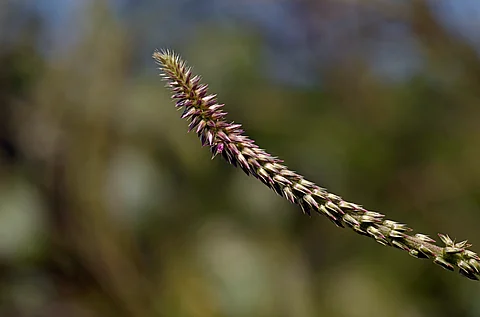

A recent study in the Journal of Bioresources has shed light on the traditional use of medicinal plants in Tripura, with a particular focus on the "Apang Plant" (Antidesma roxburghii). Renowned for its effectiveness in treating bone fractures, this plant has been utilized by local healers for generations. Despite its established place in traditional medicine, no phytochemical studies have been conducted to validate its therapeutic properties scientifically. The research, titled Point Pattern Analysis and Consensus Agreements on Traditional Knowledge of Medicinal Plants Used by Traditional Healers of Tripura, emphasizes the importance of integrating traditional knowledge with modern science.
The study catalogued 248 plants used to address 75 health conditions and employed ethnobotanical indices like Usage Report (UR), Use Value (UV), Fidelity Level (FL), and Relative Frequency of Citation (RFC) to quantify the cultural and medicinal significance of these plants. Among the species identified, Tinospora cordifolia, Piper nigrum, Zingiber officinale, and Antidesma roxburghii emerged as highly valued for their therapeutic applications. Key findings also highlighted the potential of some plants in treating hepatobiliary disorders affecting the liver, gallbladder, and bile duct.
The Apang Plant is widely acclaimed for its effectiveness in fracture treatment, though no phytochemical studies have yet been conducted on it.
Prasenjit Patari, PhD Student Tripura University (Co-author of the Study)
Prasenjit Patari, one of the study's authors, remarked, "We interviewed 100 traditional healers who treat various ailments. The Apang Plant is widely acclaimed for its effectiveness in fracture treatment, though no phytochemical studies have yet been conducted on it."
The researchers advocate for further phytochemical and pharmacological studies to validate the efficacy of these plants. They also propose standardizing preparation methods, dosages, and administration to align these remedies with modern medical standards. By doing so, traditional medicine could be better integrated into contemporary healthcare systems while preserving biodiversity for medicinal research and development.
Quantitative analysis underscored the reliability of traditional remedies. High fidelity levels (FL) were observed for plants like Antidesma roxburghii and Cissus quadrangularis in treating fractures, while Euphorbia royleana was frequently cited for managing bronchitis. These findings reaffirm the cultural and medicinal value of these species.
The study delved into the backgrounds of traditional healers, revealing that 88% were women and 59% belonged to indigenous communities. Most healers were shifting cultivators, ranging in age from 30 to 90 years, with varying educational levels. Among them, 29 had primary education, 27 had completed the Madhyamik exam, 18 had attended middle school, four had finished higher secondary, 10 were graduates, and 12 lacked formal education.
To substantiate these traditional uses, comprehensive studies on plant compounds and pharmacological effects are essential.
Prasenjit Patari, PhD Student Tripura University (Co-author of the Study)
The analysis also provided insights into the most frequently used plant parts. Leaves, used by 131 species, were the most common, followed by root bark (45 species), stem bark (30 species), fruits (21 species), and whole plants (17 species). The study’s findings advocate for structured approaches to documenting and validating traditional medicinal practices to preserve their relevance.
The authors—Patari, Sojeetra Niral Hansrajbhai, Sanjoy Das, and Rohit Kumar Ravte—conducted their research with support from the Regional Ayurveda Research Centre in Agartala. They argue that recognizing the value of indigenous knowledge is crucial for both cultural preservation and the development of novel pharmacological treatments.
"To substantiate these traditional uses, comprehensive studies on plant compounds and pharmacological effects are essential," the report noted. The study's call to action underscores the need for collaboration between traditional healers and scientific researchers to unlock the potential of these natural resources.
By spotlighting the medicinal potential of Tripura's biodiversity, the study emphasizes that preserving indigenous knowledge is not only vital for cultural heritage but also for advancing medical science.
Reference :
1. Point pattern analysis and consensus of agreements on traditional knowledge of medicinal plants used by traditional healers of Tripura Authors: Sojeetra Niral Hansrajbhai, Prasenjit Patari, Sanjoy Das, Rohit Kumar Ravte Article No.: SNJBR92; Published on 30.06.2024 Doi: https://doi.org/10.5281/zenodo.13831177
(Input from various sources)
(Rehash/Yash Kamble/MSM)
